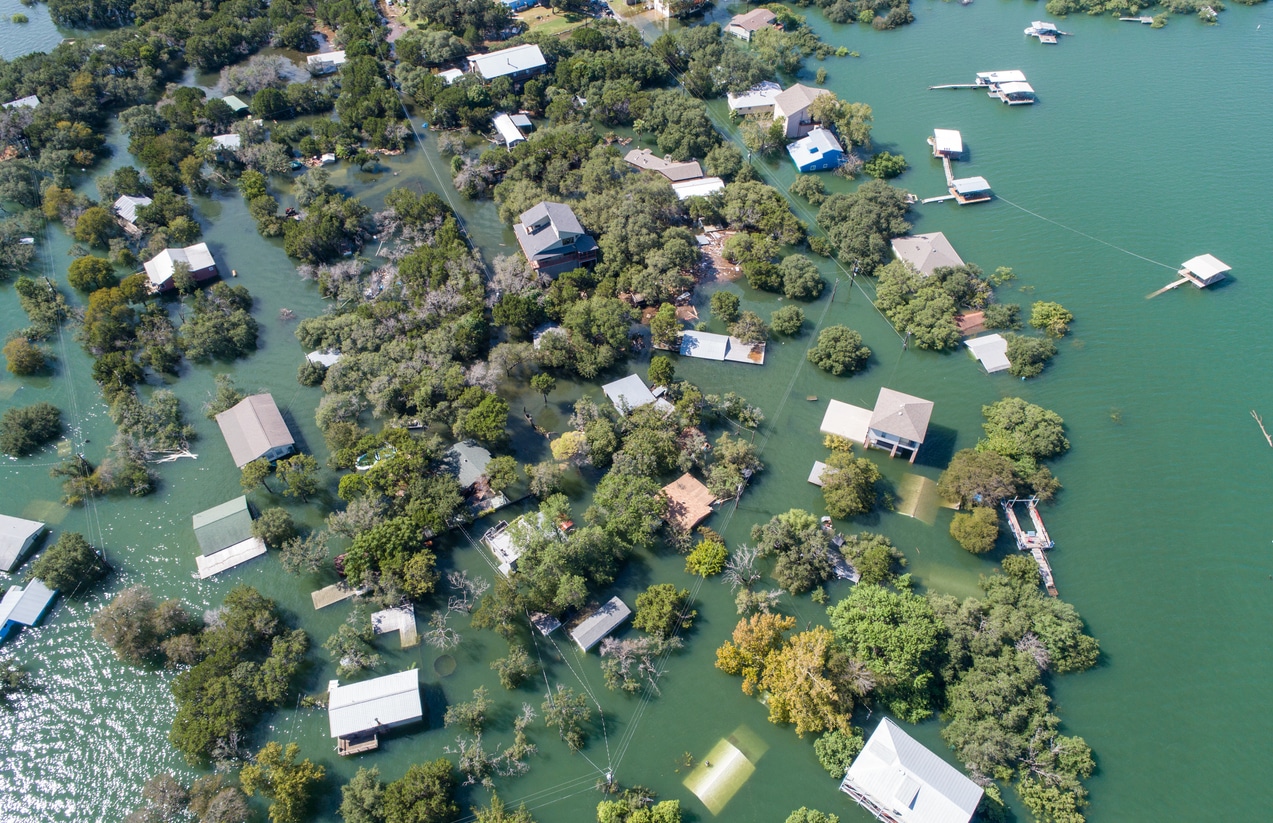According to a new report from the real estate firm Redfin, when the program goes into effect for existing policyholders this month, more than 80% of those homeowners will see rates rise, and those gains will be spread largely evenly among rich and poor areas. The report also discovered that "Majority-Hispanic" neighborhoods are more likely than any other major ethnic or racial neighborhood group to see their flood-insurance premiums rise, with 84 percent of policyholders facing increases.
The NFIP covers approximately 3.4 million single-family homes, the majority of which are in high-risk flood zones. The program was established in 1968 to cover homes that private insurers either refused to cover or would only cover at a high cost. The government offered lower premiums, but as a result, the program has gone bankrupt over time. It is in debt to the tune of more than $20 billion, owing in part to climate change-related phenomena such as rising sea levels and more storms. These have resulted in more widespread flooding, causing more damage than the insurance policies could cover.
FEMA attempted to reform the program for years in order to make premiums more reflective of actual costs, but it was unpopular with Congress and constituents. FEMA implemented Risk Rating 2.0, a reform based on cutting-edge science and modeling techniques, last year. The new program aims to be more equitable by basing rates on the risk of individual homes rather than the risk of all homes in one risk zone, as the old method did. The idea is that the new system would charge higher premiums for the riskiest homes while charging lower premiums for many of the other homes in the program. FEMA also stated that rates would not exceed 18% per year and would be capped at $12,000 total. It also stated that the premium increases would primarily affect the most expensive homes.
FEMA declined to comment on Redfin's findings. "FEMA has not provided any Risk Rating 2.0 premium information to outside entities, and any attempt to compare an outside entity's premium estimates to Risk Rating 2.0 is purely speculative," the agency stated in an email.
Sheharyar Bokhari, a senior economist at Redfin who worked on the report's research, acknowledged that FEMA did not release individual home data, but said the agency is releasing zip-code-level data on the share of policyholders who will see rate increases. Redfin derived its findings by analyzing this data alongside census data on income and ethnicity in zip codes.
According to the analysis, approximately 90% of homeowners in Texas and Florida will face increases. Despite experiencing a disproportionate amount of devastating flooding from hurricanes, premiums in those states have been significantly lower than the national average. The increases will disproportionately affect Hispanic-majority zip codes.
"That's likely because Texas and Florida—the states hardest hit by FEMA's overhaul—have the second-largest Hispanic populations after California," according to the report.
According to Redfin, 76 percent of policyholders in the highest-earning neighborhoods are seeing their premiums rise. This is slightly lower than the national average, which is 81 percent of policyholders who are about to see rate increases.
One reason for the disparity between Redfin's discovery and FEMA's promises could be semantics. As part of its "stable group," FEMA included people whose premium increases will be $10 or less per month. However, Bokhari believes that the long-term implications, even for that group, could be significant rather than "stable," because while FEMA can only raise rates by 18 percent per year, it can do so for up to 15 years or until a policy reaches $12,000. This could have a significant impact on less wealthy people over time, even if they aren't paying the highest absolute amount in premiums, he said.
"Most policyholders are unlikely to feel the sting of FEMA's price increases in year one, but by year five or ten, the increased cost of flood insurance may influence where Americans choose to buy and build homes," Bokhari said.
Another possibility is that the FEMA rate increases will backfire, causing people to cancel policies, leaving them vulnerable to financial ruin from floods—exactly the opposite of what FEMA desired. Flood insurance is required only for people who live in designated flood zones and have federally backed mortgages. As a result, despite rising flood risk, FEMA insures fewer people than in previous years, because premiums, while relatively low, continue to rise every year for all homeowners, regardless of risk, and some people drop coverage. In 2020, the agency had approximately 3.4 million single-family home policyholders, down from 3.8 million a decade earlier.
Both Florida and Texas have seen population increases since the pandemic. Many of these people are attempting to flee higher-tax states and may be underestimating the rising cost of flood insurance.
"Some people may choose not to renew their flood insurance policies despite increased flood risk due to climate change, especially as inflation drives up prices elsewhere in the economy," said Bokhari.













